Cologne’s Carnival, also known as the Fifth Season, is one of the more strange and colorful events in Germany, attracting tourists from all over the world. From extravagant costumes, biting political satire that doesn’t shy away from even the most controversial topics, to non-stop music, mandatory drunkenness and dancing, the festival is a feast for the senses (and a strain on the liver).
But, there’s more to this annual event than meets the eye. In this article, we’ll delve into the history, traditions, and some of the more bewildering aspects of Cologne’s rich Carnival culture. From the significance of the Rose Monday Parade to Mad Kings and the wanton destruction of neckwear, read on to discover 9 things you need to know about this curious event.
1. In Cologne, Silliness Is Serious Business
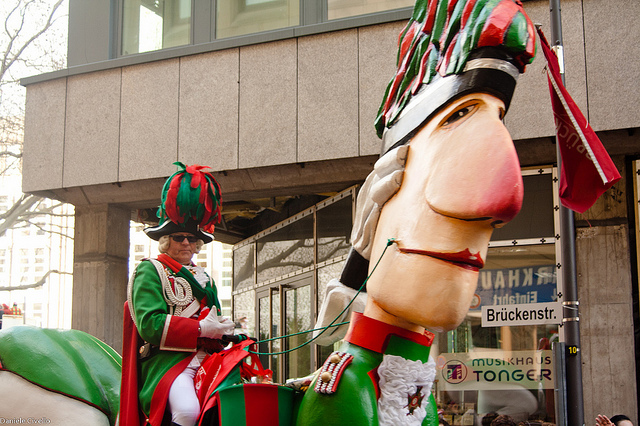
photo by DanieleCivello / Creative Commons via Flickr
At the end of February, from Thursday* until Ash Wednesday, the city of Cologne is in an exceptional state. Carnival (in German Karneval) has been celebrated in Cologne since medieval times. There are of course many German cities which celebrate carnival to varying degrees of intensity, but only in Cologne, Carnival is serious business! Any normal activity stops during these days and is replaced by dancing, laughing, singing and copious intakes of alcohol.
While the hot phase starts only on Thursday, officially the Fifth Season is already declared on the 11th of November at 11:11.
2. The participants of the Cologne Carnival are called “Jecken”
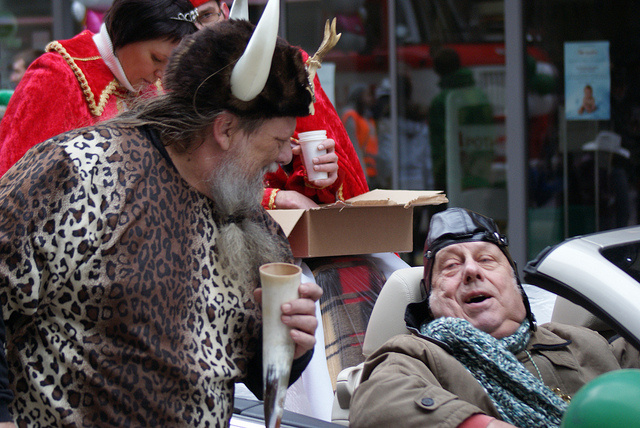
photo by PercyGermany™ Creative Commons
A Jeck is any person that participates in the Carnival. The j is pronounced like the y in the English word yam. Contrary to members of offical Carnival Clubs (Karnevalsverein) who are called Karnevalisten, anyone can be a Jeck.
3. Three Rulers Preside Over the Mad People
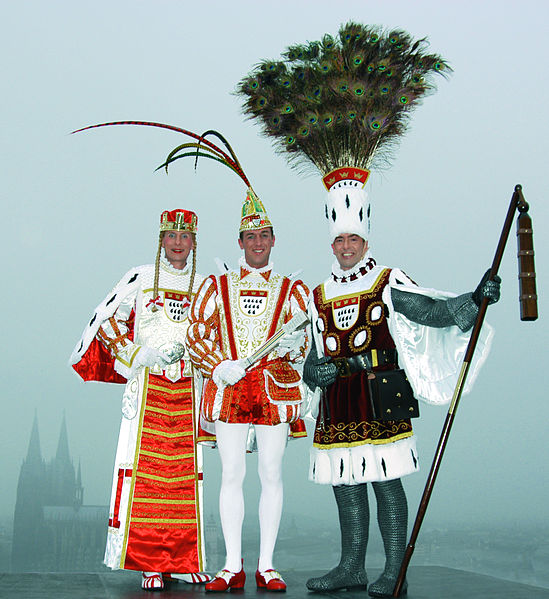
photo via Wikipedia (PD)
During the carnival season, three symbolical rulers are elected. Together they are called the Trifolium (or Dreigestirn) which consists of the character of the Prince, the Peasant and the Virgin. The Prince is the prince of the carnival itself, the Peasant represents the wealth and the defensive strength of the city of Cologne, whereas the Virgin symbolizes the virtue and beauty of the city. And yes, the Virgin is always a man.
4. In Cologne the call of the carnival is “Alaaf”, not “Helau”
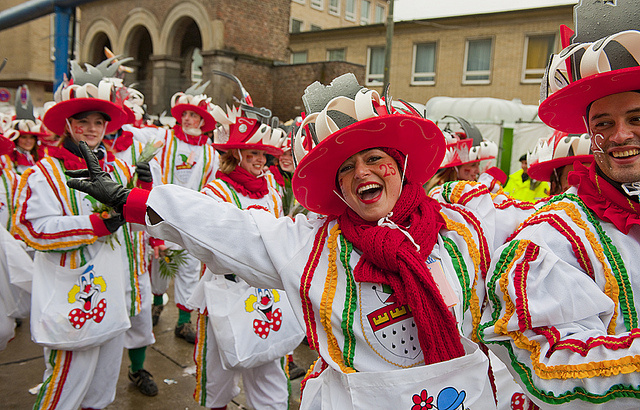
photo by Nordrhein-Westfalen Creative Commons
The call of Carnival is called Narrenruf (literally jester’s call). Each city that celebrates the Carnival in Germany and Switzerland has their own call. Also, each city (where carnival is taken seriously) is convinced of the superiority of their own carnival compared to the others, so if you want to join the fray, make sure to get the right call for the right city. For example, they shout Hellau in Mainz, while in Cologne it’s always and only: Alaaf!
5. Don’t wear a (costly) tie on Weiberfastnacht
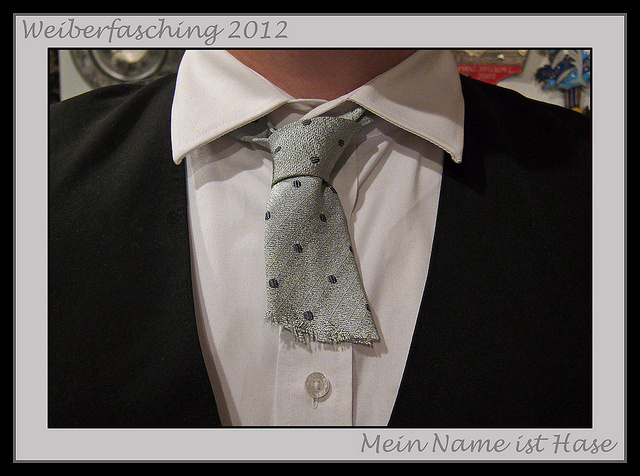
photo by Josef Türk Reit im Winkl Chiemgau Creative Commons
On Weiberfastnacht (literally women’s carnival), (also known as Fat Thursday), it is customary for women to cut off the tie of any man they see. This custom dates back to a revolt by washer women in the year 1824. Everyone traveling in or through Cologne at this day wearing a tie is bound to wear only a stump by the end of the day. The practice, which on other days would be considered damage of property, is actually sanctified by Cologne law for 24 hours.
6. Kiss or Be Kissed

photo by fireleaf Creative Commons
Another carnival custom of Weiberfastnacht is the so called Bützchen, a kiss on the cheek dealt out by women to any man they meet. This should not be mistaken as a declaration of passion or any other carnal *cough* desires, but simply as a sign of carnivalistic camaraderie and joy. I’ve heard stories of men who have turned their head during a Bützchen, trying to receive a kiss on the lips, but only got a slap in the face instead.
7. The Rosenmontagszug is Germany’s Biggest Carnival Parade
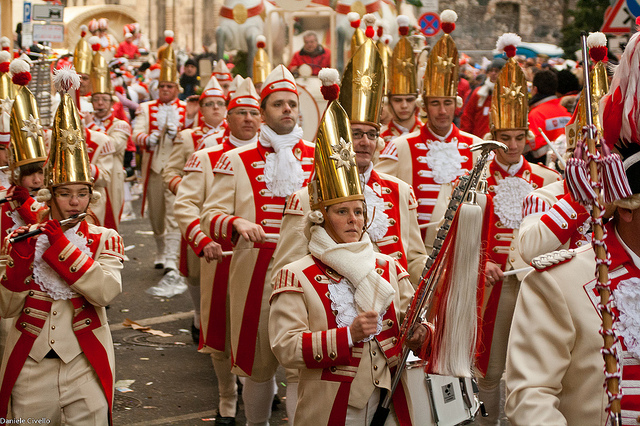
photo by DanieleCivello / Creative Commons via Flickr Creative Commons
Traditionally held since 1823, the “Zoch” (Cologne dialect for Zug: train, procession, parade) is the oldest and biggest carnival parade in Germany, comprised of marchers, bands, horses, dancers and floats. The Rosenmontagszug, which takes place on Rose Monday (as the name says), is more than six kilometers long and attended by hundred-thousands of people.
8. 300 tons of “Kamelle” are thrown each year
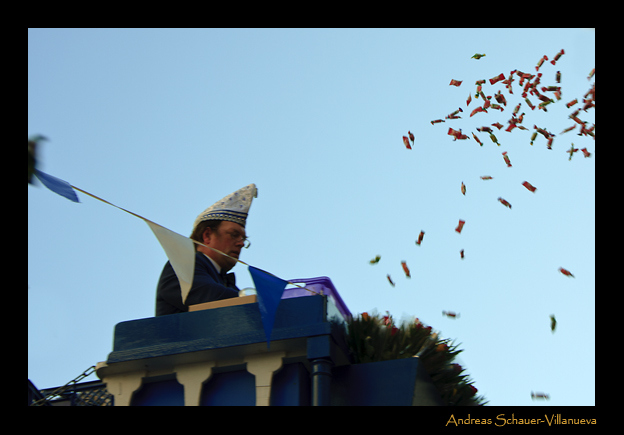
photo by A.Schauervilla Creative Commons
During the Rosenmontagszug, every year 300 tons of Kamelle are thrown to the delight of children and other sugar-fiends. Kamelle can be anything from candy, paper flowers to animals, but mostly it’s just glorious glucose in all shapes and forms. Serious Jecken have developed various strategies to catch as much flying candy as they can, using anything from their bare hands to umbrellas:
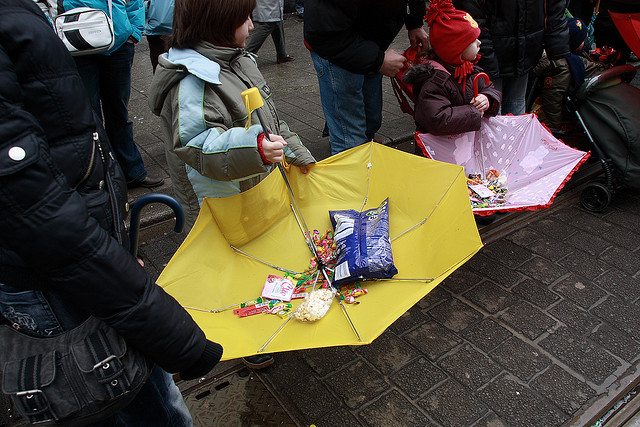
photo by gynti_46 via Flickr / Creative Commons
9. The Floats Often Feature Political Satire

photo by RuckSackKruemel Creative Commons
Part of the Rosenmontagszug are not just the traditional marching bands, horses and dancers but also giant floats, often showing recent events in a satirical light or poking fun at local politicians and world leaders.

photo by RuckSackKruemel Creative Commons
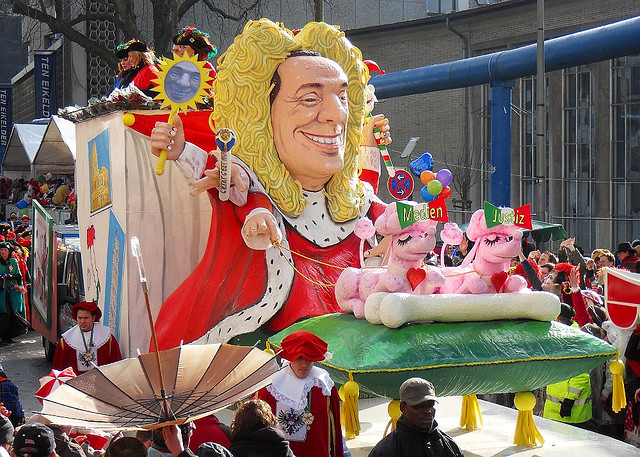
photo by RuckSackKruemel Creative Commons
Curious for more? Read (or listen to) my storybook for German learners titled Karneval in Köln and immerse yourself in the rich tradition of Cologne’s carnival culture.
–
all image rights belong to the respective owners (see captions)

